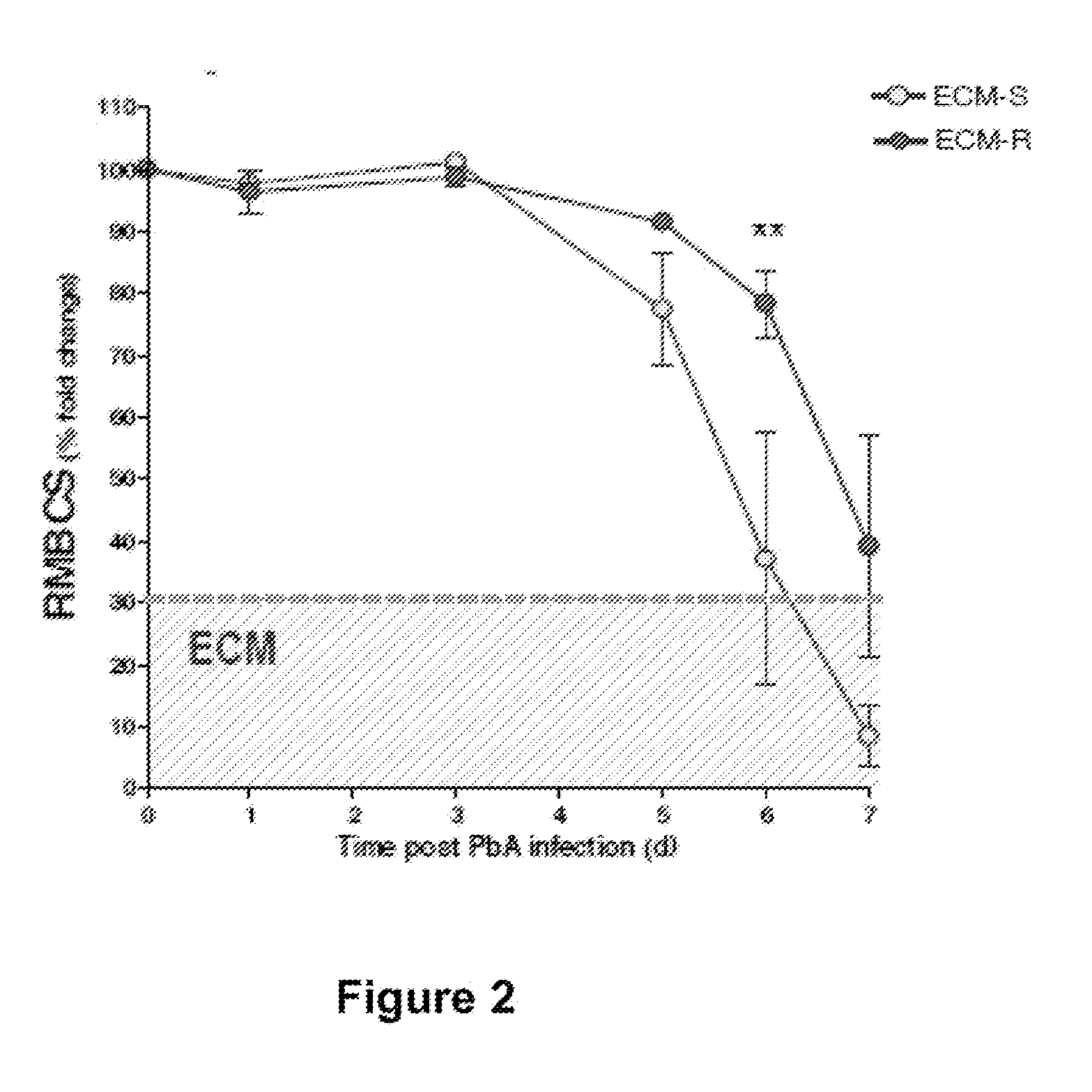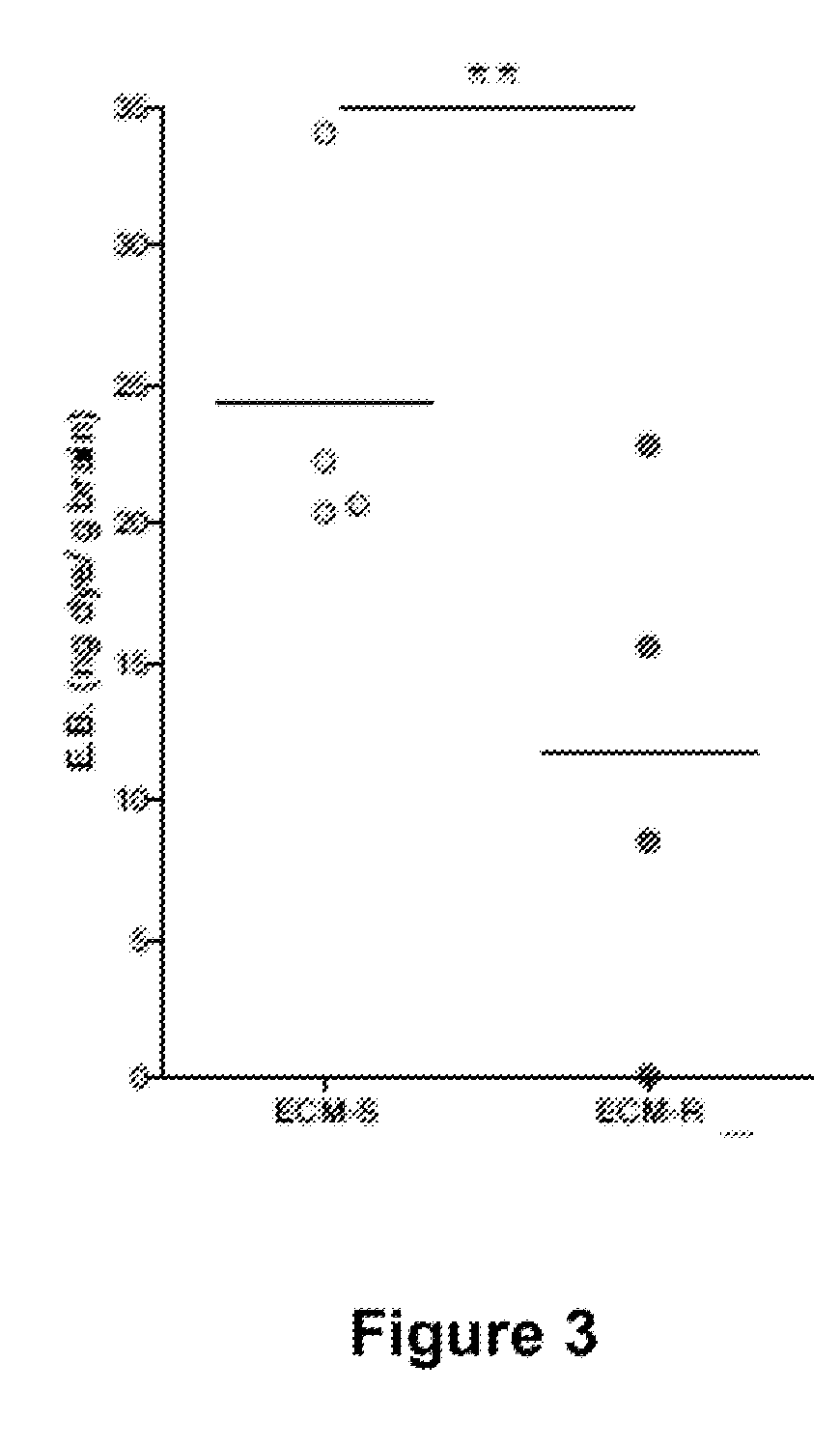Angiopoietin-based interventions for treating cerebral malaria
angiopoietin and cerebral malaria technology, applied in the field of angiopoietin molecules, can solve the problems of parasitemia, global morbidity and mortality, and treatment options currently limited to quinine or artemisinin derivatives, and achieve the effect of improving or increasing the survival of a subject and preventing vascular leakag
- Summary
- Abstract
- Description
- Claims
- Application Information
AI Technical Summary
Benefits of technology
Problems solved by technology
Method used
Image
Examples
example 1
Alterations in Endothelial Regulators in the Murine Plasmodium berghei ANKA (Pba)-Induced Model of Experimental Cerebral Malaria (ECM)
[0072]In this Example, the alterations in endothelial regulators in Plasmodium berghei ANKA (PbA)-induced experimental cerebral malaria in a mouse model were studied. This model is based on the observation that C57Bl / 6 mice are susceptible to the murine parasite P. berghei ANKA which produces a severe, ultimately fatal disease with neurological symptoms paralleling the symptoms and disease development of cerebral malaria in humans infected with Plasmodium falciparum. In contrast to C57Bl / 6 mice, BALB / c mice are resistant to PbA, in that they do not develop encephalopathy, although they become infected and achieve similar or sometimes higher levels of parasite density. This study showed that dysregulation of the Ang / Tie2 axis was associated with disease severity and fatality. Further, Ang1 levels inversely correlated with morbidity and mortality in the...
example 2
Blocking Ang2 does not Confer Improved Protection Against the Development of Experimental CM
[0082]In this Example, the effect of Ang2 blockade on PbA-induced ECM in a mouse model was assessed. Twenty C57Bl / 6 mice were infected by Plasmodium berghei ANKA (PbA) via an intraperitoneal injection of 1×106 freshly-isolated parasitized erythrocytes (PE) obtained from donor passage mice on Day 0. The infected mice were treated with 15 mg / kg of an anti-Ang2 antibody, H1H685, as described in US Patent Application Publication No. US20110027286, on Days −1, 1, 4, and 7 post-infection via subcutaneous injection. The mice were monitored for survival, neurological impairment, parasite burden and plasma protein levels, as described in detail in Example 1.
[0083]FIG. 10 shows a Kaplan Meier curve plotting the survival of mice infected with PbA and treated with anti-Ang2 antibody (referred to as “mAb ‘B’” in FIG. 10), or an isotype control (mAb ‘A’) or saline. Blocking Ang2 with the anti-Ang2 antibody...
example 3
Therapeutic Administration of Ang1 Significantly Improves Survival of Mice Infected with PbA
[0084]In this Example, the effect of Ang1 administration on PbA-induced ECM in a mouse model was studied. Eighty C57Bl / 6 mice were infected by Plasmodium berghei ANKA (PbA) via an intraperitoneal injection of 1×106 freshly-isolated parasitized erythrocytes (PE) obtained from donor passage mice on Day 0. The infected mice were divided into four groups and were treated with either 15 mg / kg of an anti-Ang2 antibody (see Example 2), a “comparator” dual blocking antibody of Ang1 / Ang2 or an isotype control, or with 25 mg / kg of AngF1-Fc-F1 (SEQ ID NO: 2) via subcutaneous injection on Day 4 and Day 6 post infection. The “comparator” dual Ang1 / Ang2 blocking antibody was the peptibody 2×Con4C (AMG386) as set forth in U.S. Pat. No. 7,205,275 (Amgen). The mice were monitored for survival, neurological impairment, parasite burden, and plasma protein levels, as described in detail in Example 1.
[0085]As sho...
PUM
| Property | Measurement | Unit |
|---|---|---|
| Fraction | aaaaa | aaaaa |
| Dimensionless property | aaaaa | aaaaa |
| Dimensionless property | aaaaa | aaaaa |
Abstract
Description
Claims
Application Information
 Login to View More
Login to View More - R&D
- Intellectual Property
- Life Sciences
- Materials
- Tech Scout
- Unparalleled Data Quality
- Higher Quality Content
- 60% Fewer Hallucinations
Browse by: Latest US Patents, China's latest patents, Technical Efficacy Thesaurus, Application Domain, Technology Topic, Popular Technical Reports.
© 2025 PatSnap. All rights reserved.Legal|Privacy policy|Modern Slavery Act Transparency Statement|Sitemap|About US| Contact US: help@patsnap.com



